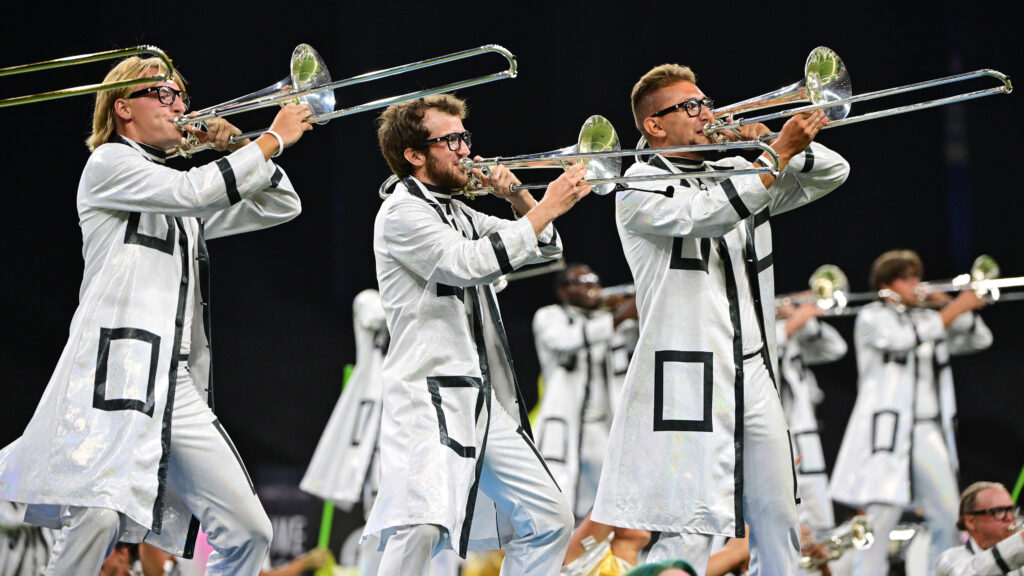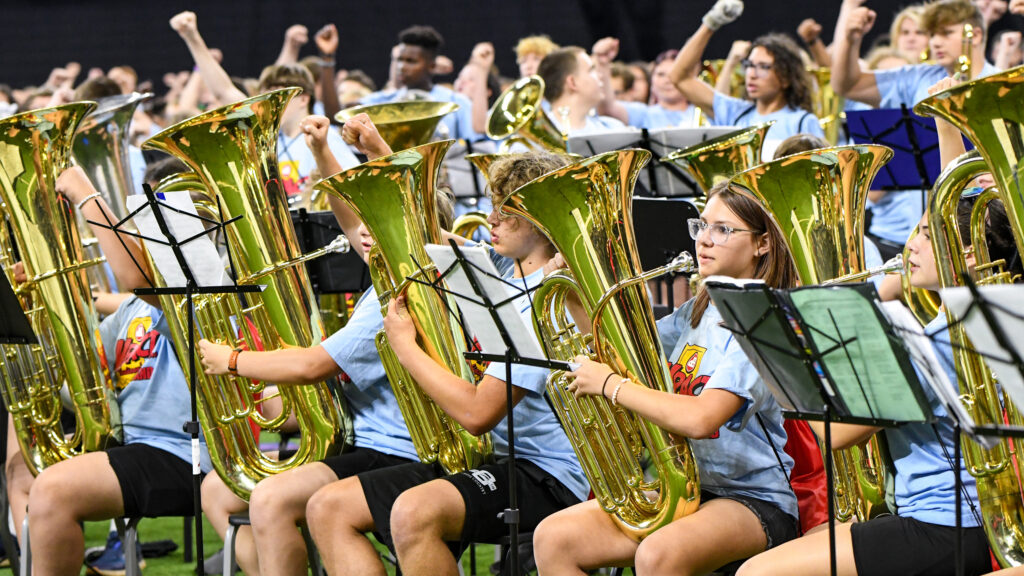
When it comes to judging a drum corps’ performance, Lucas Oil Stadium indeed presents a few challenges, according to three noted DCI adjudicators. But they also agree that the indoor, state-of-the-art facility offers an exciting array of opportunities—and ultimately, the venue had an impact on the 2009 DCI World Championships.
David Starnes, a judge (General Effect Music) at this year’s World Class Semifinals, said that from an evaluation standpoint, the overall Lucas Oil Stadium listening experience wasn’t at all compromised.
“I look at it this way: Every great concert hall in the world has challenges as well as advantages,” he says. “Some are wonderful environments for brass and percussion, while others are very friendly to strings. The audience and the performers may have very different perspectives on their experiences in what they consider to be a great environment or a poor one. As an adjudicator, part of our job is to consider the venue, whether indoor or outdoor, and evaluate that which reaches our vantage point.”
Curtis Costanza, who judged the ’09 World Class Finals (General Effect Visual), raved about Lucas Oil Stadium’s visual environment, calling it “the best indoor facility that we judge in all year.”
“Visually, the conditions are great,” he said. “There’s no weather concerns to consider—wind especially, but also sun, dampness of the field and grass inconsistencies. With all the physical challenges that confront performers, like throwing sabers, flags and rifles into the stratosphere, and flying through space at unbelievable speeds, a consistent playing field—no pun intended—is crucial. In addition, the conditions are the same for every performer in every corps, whether they’re first or last. That’s a tremendous benefit.”

Allan Kristensen, a DCI percussion judge and veteran educator, said he eagerly anticipated his first visit to Lucas Oil Stadium but acknowledged that he was slightly scared about the sound. His first viewings were at the Quarterfinals.
“I sat in the area right behind the judges and heard exactly what they heard,” he says. “I have to admit that it took a bit to understand exactly what was going on with the sound. There was the obvious echo happening, and I found that if I allowed myself to just listen to that, I lost all sense of clarity and even the pulse of the music. I actually felt frustrated and annoyed.
“But the more I listened, the more I realized that the initial sounds being produced by most of the musicians were quite clear,” he continues. “It even seemed clearer than in an outdoor stadium, as if the sound were focused right at me. This was especially true of the horns and the sounds coming from the speakers in the pit—if the speakers were pointing close to right at the box. Corps that didn’t angle their speakers toward the judge area lost clarity.”
Starnes is optimistic that the qualities and characteristics of Lucas Oil Stadium will eventually lead corps to heightened creativity—developing the art form even further and pushing the outer limits of what’s possible in an indoor environment.
“As an adjudicator, I believe Lucas Oil Stadium offers an inviting environment, and also a setting unlike any other by using the black backdrop and wonderful video screens,” he explains. “It feels like ‘The Championship event.'”
Starnes adds that adjudicators have the best seats in the house: “Our vantage point in the stadium is incredible. The listening environment is very conducive to evaluate tone, blend, nuance, as well as music and visual effect. In most cases, resonance of the brass is increased and made even more powerful due to the natural ‘ring’ of the dome.”

Their collective enthusiasm notwithstanding, all the judges we spoke with admit that that there’s still room to grow: Kristensen says he thought Lucas Oil Stadium didn’t provide quite as much clarity to marching percussion; Starnes agrees, adding that it depends at least somewhat on where you’re sitting. But no one believes the stadium ultimately had an impact on the competitive outcome of the 2009 DCI World Championships.
“The impact visually was virtually non-existent,” Costanza says. “The stadium, like all stadiums, presents challenges to designers, performers, administrators and adjudicators. We will all grow and learn to utilize and maximize the positive aspects of this state-of-the-art facility.”
Concludes Kristensen: “Do I think there was an impact on overall scoring, or even the placement of corps due to the indoor stadium? Nope. Not at all … I leave this year’s Championships hoping that the powers-that-be will continue to evaluate, research, and take action to improve on the acoustics of the stadium for the paying customer, but I’m excited to come back to Indianapolis and Lucas Oil Stadium next year.”
–Jim Dunlap, Drum Corps International Magazine





